Ramit Sethi studied psychology and technology at Stanford University. During his time there, he made a few mistakes with money, and a lousy investment led him to study exactly how money worked and to understand how to make it work for him.
Sethi repeatedly came across the same advice and found no one followed it because it didn’t work. This is how “I Will Teach You to be rich” came into existence. Sethi is committed to sharing his findings and knowledge with as many people as possible, believing that everyone has the opportunity to improve their money habits. His book became an instant best-seller, and he can claim over 20,000 success stories from his courses.
‘I will teach you to be rich ‘helps you identify where your money is going and gets it working for you so that you can save for the things that will bring you true happiness and lead a prosperous life. The six-week program identifies how to create a system for optimizing your bill payments, savings, and investments so that your money goes to all the right places with less than an hour of monthly maintenance. This book is excellent for anyone wanting a better handle on personal finances.
This summary will follow the format in Sethi’s book, taking you through each week of Sethi’s six-week program. The first week will be focused on optimizing your credit cards, followed by week two’s lesson on beating the banks. Week three will cover investing; we’ll discuss conscious spending in week four. Saving is covered in week five, and finally, week six will discuss myths and the idea that investing is for everyone, not just for the rich. We’ll finish the summary with a brief discussion on how easy it is to maintain your new money habits.
Chapter 1. Credit card optimisation
Sethi explains that building good credit is the first step to wealth. Personal credit takes into account your credit report and your credit score. Most adults own a credit card (or two), but Sethi points out that most people need to learn how to use them properly. However, when used correctly, credit cards can save you thousands of dollars in the long run.
Credit reports and ratings – Sethi explains that a credit report provides information about your credit history, current and recent transactions, and any accounts you hold. This information is provided to lenders when you apply for a loan or any lending.
Your credit score differs slightly; you are assigned between 300 and 850. This number is used to explain to lenders your risk factor in lending. If you have a high credit rating, you are seen as less of a risk, and a low credit rating represents a higher risk. Therefore, it would help to have a high credit rating for future purchases, including houses and loans. Lenders and banks will decide whether or not they will lend you money based on your credit report and rating.
Use them right – a credit card can be handy when used correctly. Sethi emphasizes the importance of paying your bills in full and on time. Stay on time on these payments, or you will find yourself facing interest. When this happens, your credit card essentially loans you the money you don’t have. Paying interest is something you want to avoid at all costs. Sethi explains that if you make a purchase on your credit card and have to pay interest, you are essentially paying more for your investment than it’s worth.
“Building good credit is the first step in creating an infrastructure for being rich.”
Week one top tip: Sethi has several tips to help you get your credit cards up and avoid common mistakes.
1. Request your credit report and score. Understand what the numbers mean and what this means for your credit.
2. If you already have a credit card, check with the bank to see if it’s a no-fee card. If it still needs to be, request this. And if you don’t already have a card, get one. Again, ask to have all fees waived.
3. Set up an automatic payment to ensure your credit card bill is never missed and always paid in full. Ensure that this is done every month.
4. If you have some debt, make a plan to start paying it off. Call your lender to restructure your payments to ensure they are paid off quickly. The aim is to get out of debt as fast as possible so you can start reaping the rewards.
Chapter 2. Banks
Sethi emphasizes the importance of selecting the right bank and accounts when setting up your finances. Your bank plays a pretty important role, and you want to build a good relationship with them to ensure you save money on unnecessary fees.
Cheque accounts – Most people have a cheque account; this is a standard account that money can go in and out of regularly. Sethi recommends you treat this like an email inbox. If all your money can come into this main account, you can filter it into the appropriate side accounts, savings or investments. When deciding upon a cheque account, select one that pays interest like a savings account and is free; you don’t want monthly, yearly or transactional fees.
Savings accounts – Sethi explains that you should open a savings account for short-term to mid-term savings. Think of it as a place to keep your money for anywhere from one month to five years. You’ll use this account to save money for Christmas presents, vacations, and even more significant sums like a house deposit. Unlike your cheque account, a savings account should not be regularly withdrawn, and you should earn decent interest on the money there.
Week two top tips:
- If you don’t already have one, open a cheque account. Double-check and make sure there are no fees.
- If your account has monthly or yearly fees, call the bank and negotiate to waive the fee. Other things to look out for are a minimum fees and transactional fees.
- Open a savings account with high interest. Ensure that you split up your spending money from your savings.
- Ensure you have one-and-a-half months of expenses in your cheque account and transfer any remaining money into your savings.
Chapter 3. Investing
Investing can be an overwhelming subject, and for this reason, many people tend to avoid it altogether. Sethi wants to educate and empower people so everyone feels confident to invest. Sethi explains that many people were put off investing after the global financial crisis, but times like this are when investing is a wise move.
Five simple steps to follow to begin the process of investing:
1. Sethi explains that there is no better investment than one where you have a 100% return, so this is a no-brainer. This is also automatically done every pay cheque and therefore requires almost no input from you other than the initial set-up.
2. Pay off your credit card debt. Once this is done, you will have more available money to invest. Take the time to devise an achievable plan to pay this off quickly.
3. Sethi recommends also opening up an individual retirement account or an investment fund. But, again, the aim is to contribute as much post-tax income as possible.
4. Put more into your savings account if any money is left.
5. Once the four previous steps are completed, you’re left with money to play with. Either consider a non-retirement fund investment to invest your money to start a business.
Chapter 4. Conscious spending
He explains that the one piece of advice he heard the most regularly was that all you need to do is create a budget. However, Sethi believes that this is easier said than done; nobody has the time or will to track every penny going in and out; for this reason, Sethi recommends conscious spending.
Conscious spending is easy enough to do. When money comes in, your priority will be looking after your savings and investment accounts. Once those have been replenished, you can consider all of the remaining cash yours to spend guilt-free.
The best way to handle the remaining money is to decide where to spend your money ahead of time. Sethi explains that you should have a frugal approach (not a cheap approach). Frugality is preferred over being affordable with everything because you can save on most of your purchases but have the freedom to spend more in a few areas.
Consider your priorities; Sethi explains that if you want to go to the movies weekly as your splurge, consider buying something other than a $2.50 coke every lunchtime. Prioritize the film over the coke; it’s up to you to decide where you are willing to make sacrifices and where you want to splurge.
Week four top tips:
- When you get your next paycheck, try and minimize your spending and determine where most of it goes.
- Break up your income into fixed costs, long-term investments, saving goals, and guilt-free spending.
- Have a look at some of your fixed costs. Are you getting the best deal on insurance? Consider shopping around at these costs to see what you can minimize.
- Determine what your conscious spending plan will look like. Where are you going to save, and where are you going to spend?
- Stick to your plan and update it every week. When you receive receipts, enter them into your plan to ensure you understand what’s happening.
- Sethi emphasizes the importance of ensuring your system is as straightforward and quick as possible; you need to be able to maintain this long-term.
Chapter 5. Save
The next stage in Sethi’s plan is all about automating your systems for savings, investing, and spending. The aim is to automatically filter your income into the appropriate accounts without your intervention. Sethi explains that spending some time setting it up initially will save you plenty of time further down the track. It means that all your bills will get paid automatically, and you no longer have to worry about things like an overdraft.
● Once a week/fortnight/month, you’ll receive your income.
● Your workplace should automatically deduct a portion of your saving.
● The remainder will go straight into your cheque account.
● Automate a portion of this to go to savings and investments.
● Have your credit card bill paid automatically via direct debit. (this covers all your fixed costs such as utilities, internet, etc.)
● Whatever is left can be considered guilt-free spending.
Week five top tips:
● You should aim to link all of your accounts. Sethi recommends ensuring you have all your login information in one place. Otherwise, you’ll waste time figuring various passwords and usernames out.
● Now spend time setting up your ‘automatic money flow.’ Once the accounts have all been linked, this should be simple. Set up individual automatic payments to each of your accounts.
Chapter 6. Financial expertise myths
Sethi explains that most people are intimidated by the finance industry, financial advisers, and fund managers. However, he believes that the majority of people are completely capable of making their investments.
Sethi explains that you don’t need to pay people to invest. Fund managers aren’t magical and can’t foresee what the markets will do. Sethi points out that fund managers fail with 75% of investments. Mutual funds often have unnecessary fees paid out to the fund manager.
“Index funds (similar to mutual funds, but managed by a computer which matches what the markets are doing) can provide better returns with much lower fees. So ignore the pundits’ predictions. Ignore the last year or two of a fund’s performance .”
Sethi believes that although fund managers may seem to perform well in the short term, they will never beat the market long-term. This is based on fees, expenses, and the mathematical probabilities that come into play when selecting stocks.
Is investing only for the rich? Everyone can invest, not only the rich. Sethi explains that having a straightforward and low-maintenance investment portfolio is possible. However, he emphasizes the importance of diversification in your investments. It would help if you considered diversifying by buying a few different stocks and having different assets, considered stocks and bonds.
Sethi explains that the time to take moderate risks when investing is when you are younger; you have more time and are more likely to rebound from a considerable loss. Therefore, you want to be more conservative with your investments and take fewer risks as you age.
Where should you invest? – Sethi recommends index funds as an excellent first option. He explains that they are less expensive than mutual funds. However, the downside is that you need to invest in a few different funds to ensure that you are diversifying. This will involve more time and research on your behalf than a mutual fund would.
“Multiple funds mean you have to rebalance your funds regularly, usually every year, which is a laborious process of redistributing your money to different investments, so you get back to your target asset allocation .”
Another low-cost option is a lifecycle fund. Sethi explains that lifecycle funds consider your age and will automatically diversify your investments. He explains that lifecycle funds are really ‘funds-of-funds.’
“For example, a lifecycle fund might include large-cap, mid-cap, small-cap, and international funds. (and those funds, in turn, will hold stocks from each of those areas.) In other words, your lifecycle fund will own many funds, which all own stocks and bonds.”
Week six top tips
● It’s essential to decide on your investing style before you get started. Remember that a lifecycle fund is simple and requires little input, but you have less control. Otherwise, index funds are a good option if you are confident diversifying your portfolio.
● Spend time investigating your investments. Do plenty of research and understand what you are investing in.
● Once you’ve decided on investments, purchase your chosen funds.
● If you don’t have enough money to invest immediately, start dedicating some money to your investment account and set a savings goal. Once you reach your goal, you can make your purchases.
Chapter 7. Where to from here?
Sethi explains that once your accounts are all in order and investments are under control, it’s easy to maintain your systems. Instead, he recommends returning to your conscious spending plan and trying to squeeze any extra money out that can be distributed between savings and investments. This is where your money is going to have the most value.
Sethi recommends that you log into your investment accounts only a few times a week, this only causes extra stress, and you’ve set up an automatic system for a reason. Instead, commit to checking once a month and wait for the money to grow.
” Be careful about selling out of your investments too soon. In your twenties and thirties, there are only three reasons to sell your investments: you need the money for an emergency, you made a terrible investment, and it’s consistently underperforming the market, or you’ve achieved your specific goal for investing.”
Key takeaways
- Learn how to use your credit card appropriately.
- Never miss bill payments; you never want to pay interest.
- Automate bill payments so you don’t have to worry.
- Request no-fee accounts with your bank.
- Open a high-interest savings account and a standard cheque account.
- Ensure you have one-and-a-half months of expenses in your cheque account and transfer any remaining money into your savings.
- Pay off all debt.
- Also, open up an individual retirement account or an investment fund.
- Decide on your investing style before you get started.
- Do plenty of research and understand what you are investing in.
I Will Teach You To Be Rich Book Review
As a reader of I Will Teach You To Be Rich by Ramit Sethi, I found this book to be a practical, engaging, and comprehensive guide to personal finance and wealth-building. Sethi’s no-nonsense approach to money management breaks down complex financial concepts and provides actionable advice for readers looking to take control of their financial future.
The book covers a wide range of topics, including budgeting, saving, investing, and debt management, all presented in an easy-to-understand and relatable format. Sethi’s writing style is conversational and infused with humor, making the subject matter approachable and enjoyable to read.
As I applied the strategies and techniques shared in I Will Teach You To Be Rich, I noticed a significant improvement in my financial habits, savings, and overall financial health. One of the most valuable lessons I learned from this book is the importance of automating finances to save time, reduce stress, and achieve long-term financial goals.
In conclusion, I Will Teach You To Be Rich is a must-read for anyone looking to take control of their finances and create a solid foundation for wealth-building. Ramit Sethi’s practical advice, relatable examples, and engaging writing style make this book an invaluable resource for anyone seeking to improve their financial well-being.
Contents

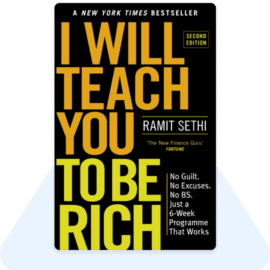


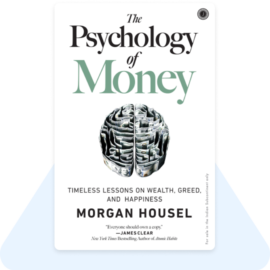
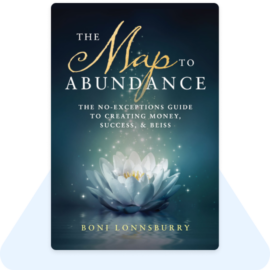

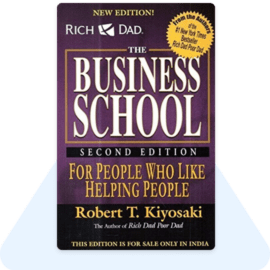

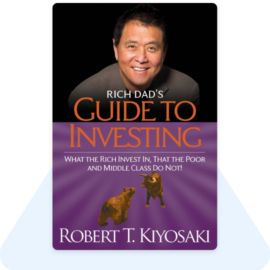
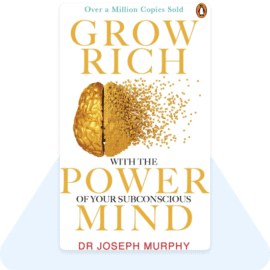

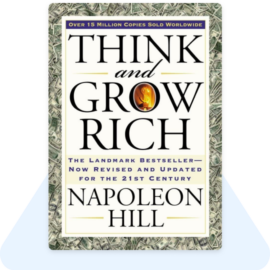
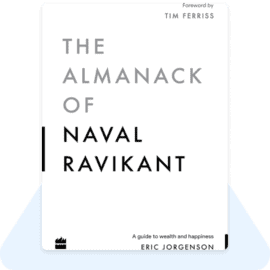
Thank you so much ? for the book Summary of “I will teach you to be rich”
Thank you so much ? for ” I will teach you to be rich” book ???